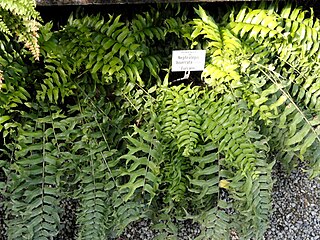
Cunnawarra is a national park located in New South Wales, Australia, 80 kilometres (50 mi) east of Armidale, 10 kilometres (6.2 mi) off the Waterfall Way and 565 kilometres (351 mi) north of Sydney. The 25-kilometre (16 mi) Styx River Forest Way runs from the Point Lookout Road through Cunnawarra National Park to the Kempsey Road. The New England National Park adjoins the Cunnawarra National Park on the north-eastern boundary and the Oxley Wild Rivers National Park joins it on the southern corner.

Yuraygir is a national park in New South Wales, Australia, located 482 km (300 mi) northeast of Sydney. It was created in 1980, a result of the merger and enlargement of two national parks, Angourie and Red Rock National Parks, both of which had been established in 1975. At the time of its establishment in 1980, the park was fragmented, and parcels of land were bought over the following two decades to unite segments into a more contiguous protected area. Sometimes these acquisitions required protracted negotiations with land owners.

The bush stone-curlew or bush thick-knee is a large, ground-dwelling bird endemic to Australia. Its favoured habitat is open plains and woodlands, where it stalks slowly at night in search of invertebrates such as insects. Its grey-brown coloration is distinguished by dark streaks, its eyes are large and legs are long. It is capable of flight, but relies on the camouflage of its plumage to evade detection during the day; the bush curlew adopts a rigid posture when it becomes aware of an observer. Both sexes care for two eggs laid on the bare ground, usually sited near bush in a shaded position or next to a fallen branch.

The Mediterraneanshort-toed lark is a small passerine bird found in and around the Mediterranean Basin. It is a common bird with a very wide range from Canary Islands north to the Iberian Peninsula and east throughout North Africa to parts of the Middle East. The International Union for Conservation of Nature has rated its conservation status as being of "least concern".

The Mediterranean recluse spider is a species of spider that originated in the Mediterranean region as its name implies, but can now be found in many parts of the world and is listed as one of the most invasive spiders worldwide. Usually dwelling in caves, the spiders will also inhabit basements and tunnels. Their webs shelter their egg sacs, which hatch into young that molt as they grow. The spider hunts at night and eats species including silverfish and cockroaches, and they usually target smaller insects.

The pied oystercatcher is a species of oystercatcher. It is a wading bird native to Australia and commonly found on its coastline. The similar South Island pied oystercatcher occurs in New Zealand.

The hymenopteran family Platygastridae is a large group of exclusively parasitoid wasps, mostly very small (1–2 mm), black, and shining, with geniculate (elbowed) antennae that have an eight-segmented flagellum. The wings sometimes lack venation, though they may have slight fringes of setae.

The rufous rat-kangaroo or rufous bettong is a small, jumping, rat-like marsupial native to eastern Australia. It is the only species in the genus Aepyprymnus. The largest member of the potoroo/bettong family (Potoroidae), it is about the size of a rabbit. The rufous rat-kangaroo is active at night when it digs for plant roots and fungi, and like other marsupials it carries its young in a pouch. Though its range is reduced, the population is healthy and stable.
Eleutherodactylus rufescens, commonly known as the red peeping frog or Nevado de Colima chirping frog, is a species of frog in the family Eleutherodactylidae. It is endemic to Mexico and known from the region of the eponymous Nevado de Colima mountain in Colima, Jalisco, and further east and south in the Jalisco and Michoacán states. Its natural habitat is subtropical or tropical moist montane forests. It is threatened by habitat loss.
The northern banana salamander, also known as common dwarf salamander or rufescent salamander, is a species of salamander in the family Plethodontidae. It is found in the Atlantic slopes of Meso-America from San Luis Potosi, Veracruz, and northern Chiapas in Mexico continuing on to the southern part of Guatemala, Belize, and northern Honduras. However, its range south of Mexico is uncertain because the records may refer to other species.

The rufous scrubbird is a bird species in the family Atrichornithidae. It is endemic to Australia.

Rhizedra lutosa, the large wainscot or Isle of Wight wainscot, is a species of moth of the family Noctuidae. It is native to the Palearctic realm. It has been introduced into eastern North America and is spreading.

Pararguda nasuta, the wattle snout moth, is a species of moth of the family Lasiocampidae. It is found in the south-east quarter of Australia.

Pararguda is a genus of moths in the family Lasiocampidae. The genus was erected by George Thomas Bethune-Baker in 1908. All the species identified in this genus were found in Australia.
Elysia rufescens is a species of sea slug, a marine gastropod mollusc in the family Plakobranchidae. This sea slug resembles a nudibranch but is not classified in that order of gastropods, instead belonging to a closely related clade, Sacoglossa, the "sap-sucking" sea slugs. This species was first described by Pease from Tahiti in 1871.

Haliotis, common name abalone, is the only genus in the family Haliotidae.

Nephrolepis biserrata is a tropical fern, endemic to Florida, Mexico, the West Indies, Central America, South America, Africa, and southeast Asia.

Aristida rufescens is a grass species native to Madagascar and to Mayotte in the Comoros archipelago. It was described by German agrostologist Ernst Gottlieb von Steudel in 1854.
Ctenophorus rufescens, commonly known as the rusty dragon or rusty-crevice dragon is a species of agamid lizard occurring in granite outcrops featuring open expanses strewn with exfoliated rock, in arid north-western South Australia, south-western Northern Territory and adjacent Western Australia.














